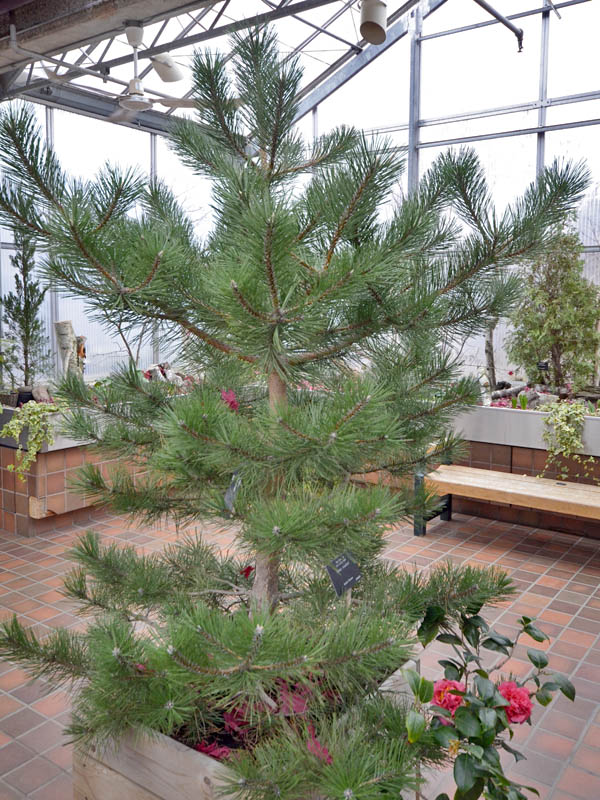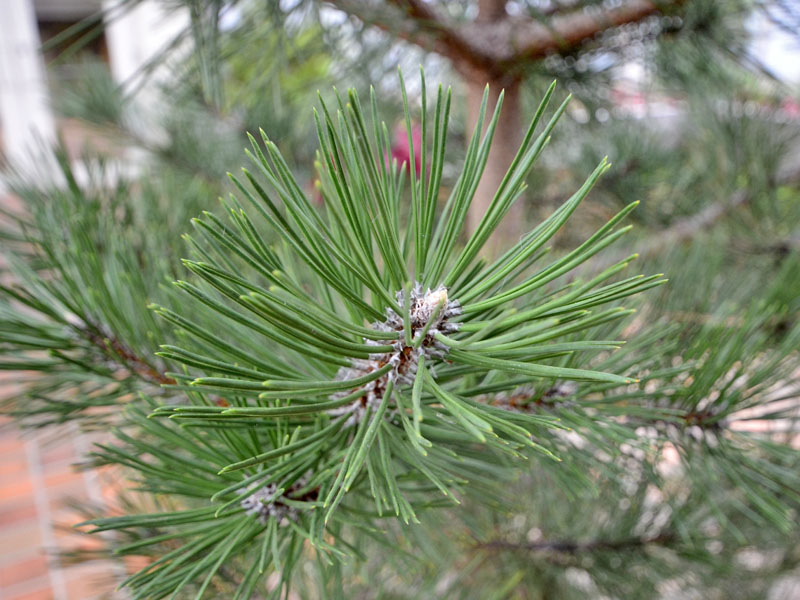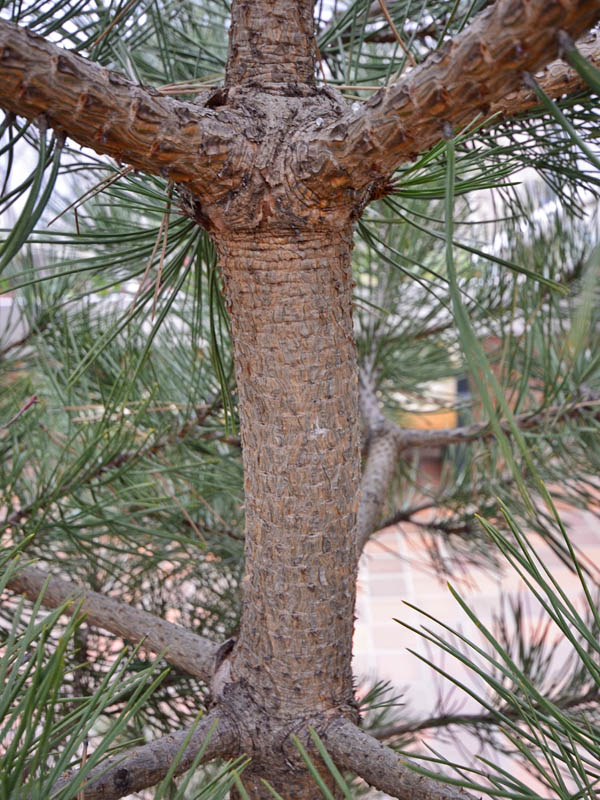
Woody > Pinus > Pinus coulteri > Pinus coulteri
Pinus coulteri
Coulter Pine, Big-cone Pine
Origin: Southern California and Northwest Mexico.
Mike's
Opinion


"
Nicknamed the Widow Maker, this tree is quite a rare plant and is only found growing in southern California and north-western Mexico. Possessing the heaviest pine cones in the world, weighing up to 2 kg.
Michael Pascoe, NDP., ODH., CLT., MSc. (Plant Conservation)
"
| Family |
| Pinaceae |
| Genus |
| Pinus |
| Species |
| coulteri |
| Category |
| Woody |
| Type |
| Tree (evergreen) |
| Pronunciation |
| USDA Hardiness Zone |
| 8 |
| Canadian Hardiness Zone |
| 7b - 8a |
| RHS Hardiness Zone |
| H5 - H6 |
| Temperature (°C) |
| -18 -(-12) |
| Temperature (°F) |
| 0 - 10 |
| Height |
| 12 m |
| Spread |
| 8 m |
Photographs
Description and Growing Information
Flowering Period
| General Description |
| A tall tree with dark green needles and deep ridges. |
| Cultivation |
| Most well-drained soils in full sun. Prefers light soils that are sandy with a pH of 5.5 -7. |
| Shape |
| It can be pyramidal but also can be open and very irregular towards maturity. |
| Growth |
| Slow |
| ID Characteristic |
| Black to dark grey bark with deep, ridged furrows which run up the tree . Extremely large and heavy pinecones, 40 cm long and 2.3 kg. |
| Pests |
| Armillaria fungus (Honey fungus) can cause mortality. |
| Habitat |
| Rocky cliffs and mountain sides in small isolated pockets of Southern California towards Northern Mexico at altitudes of 2,000 m. |
| Bark/Stem Description |
| The bark is thick with large ridges, black to a dark grey in colour. With age ridges become larger and deeper. |
| Flower/Leaf Bud Description |
| The buds are large and thick, with a dark red hue, ovoid, 1.5 cm long and resinous. |
| Leaf Description |
| There are 3 needles per fascicle with each needle 15-30 cm long, a deep dark green colour throughout the year. |
| Flower Description |
| The tree is monoecious, the male cones are a yellow and form in tight clusters while the female cones are a dark red-brown colour. |
| Fruit Description |
| The cones are pale brown, with a spine on the end of each scale, they are very large, ranging in size from 24-40 cm long, and can weigh up to 2 kg. The cones first develop on the trunk when it is young, but as the tree matures, the cones form on the branches and can persist for a number of years before falling off. |
| Colour Description |
| The bark is a black to dark grey. Needles a deep green colour, male cones are yellow, female cones a red-brown colour. |
| Texture Description |
| Coarse. |
| Notable Specimens |
| The Royal Botanical Gardens, Burlington, Ontario, Canada. |
| Propagation |
| Seeds should be sown outdoors in the autumn or in a cold frame during the winter. Seeds should not dry out during storage. Stratification of the seeds at 4°C for 6 weeks helps germination. Once planted in its permanent spot, it should not be moved due to its small root system. Care should be given to help protect against the elements, such as mulching or a wind fence during the first few years. Cuttings can be taken, only on young trees that are not older then 10 years of age. |
References
Farrar, John Laird. "Trees of the northern United States and Canada". Ames: Iowa State University Press, 1995. Print.


